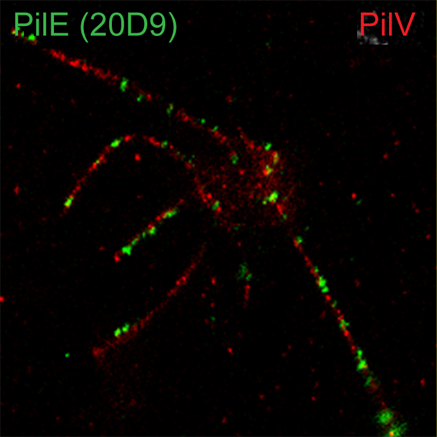12/11/2021 .
The minor pilin PilV provides a conserved adhesion site throughout the antigenically variable meningococcal type IV pilus
Jean-Philippe Barnier et al PNAS 2021

Neisseria meningitidis utilizes type IV pili (T4P) to adhere to and colonize host endothelial cells, a process at the heart of meningococcal invasive diseases leading to meningitis and sepsis. T4P are polymers of an antigenically variable major pilin building block, PilE, plus several core minor pilins that initiate pilus assembly and are thought to be located at the pilus tip. Adhesion of N. meningitidis to human endothelial cells requires both PilE and a conserved noncore minor pilin PilV, but the localization of PilV and its precise role in this process remains to be clarified. Here, we show that both PilE and PilV promote adhesion to endothelial vessels in vivo. The substantial adhesion defect observed for pilV mutants suggests it is the main adhesin. Consistent with this observation, superresolution microscopy showed the abundant distribution of PilV throughout the pilus. We determined the crystal structure of PilV and modeled it within the pilus filament. The small size of PilV causes it to be recessed relative to adjacent PilE subunits, which are dominated by a prominent hypervariable loop. Nonetheless, we identified a conserved surface-exposed adhesive loop on PilV by alanine scanning mutagenesis. Critically, antibodies directed against PilV inhibit N. meningitidis colonization of human skin grafts. These findings explain how N. meningitidis T4P undergo antigenic variation to evade the humoral immune response while maintaining their adhesive function and establish the potential of this highly conserved minor pilin as a vaccine and therapeutic target for the prevention and treatment of N. meningitidis infections.
